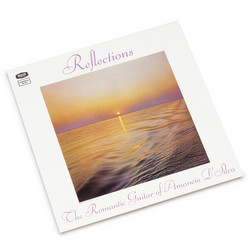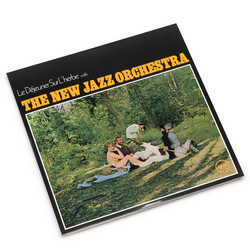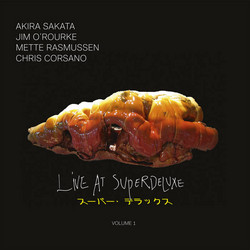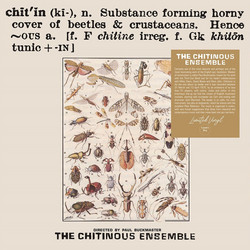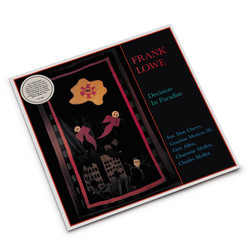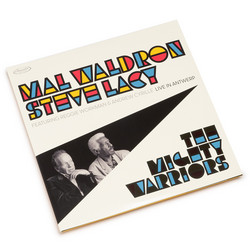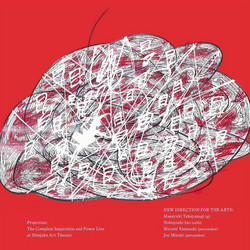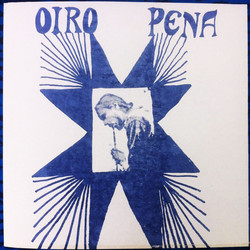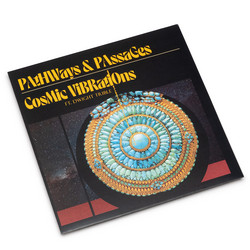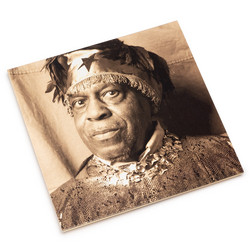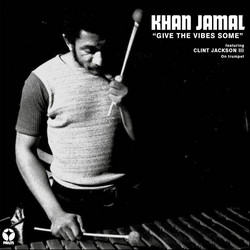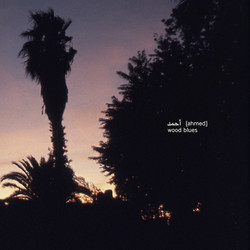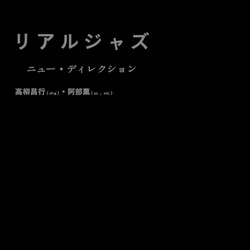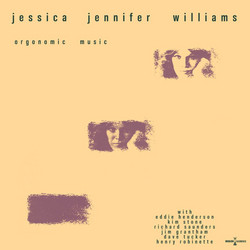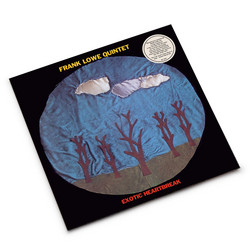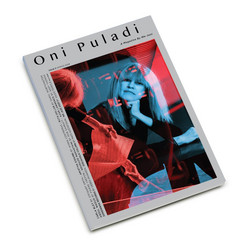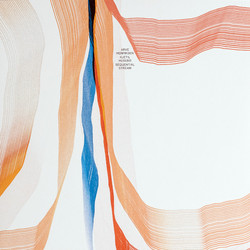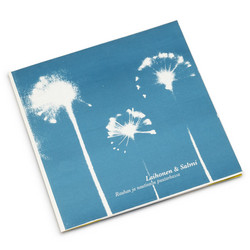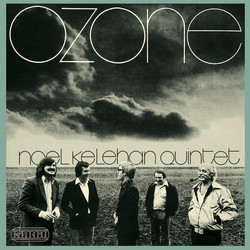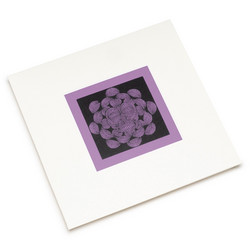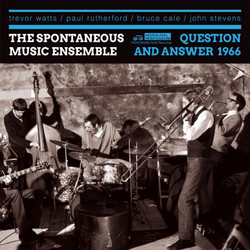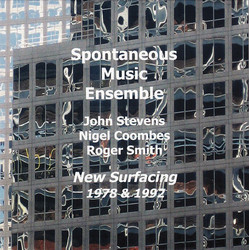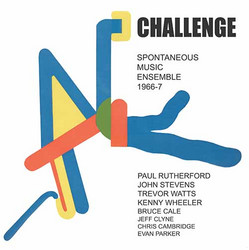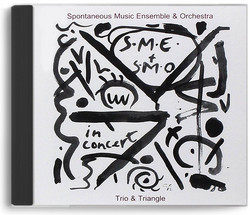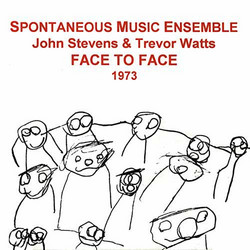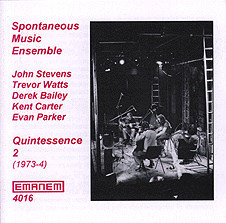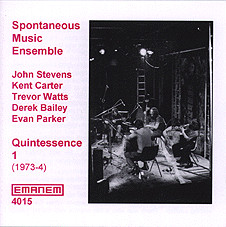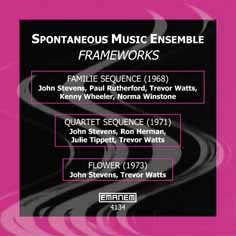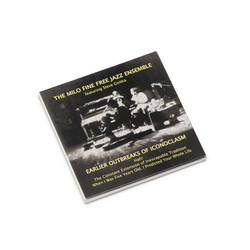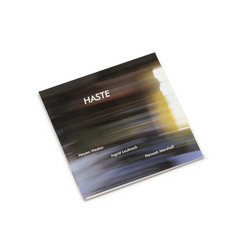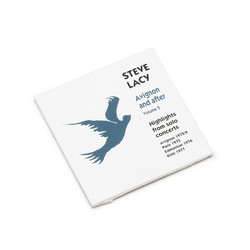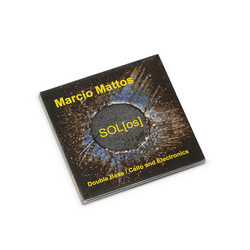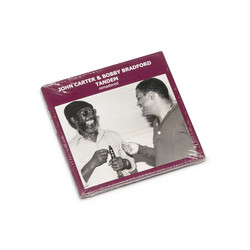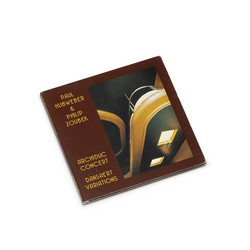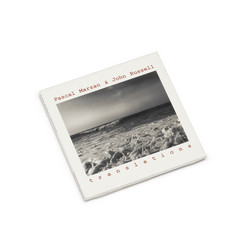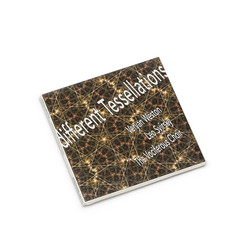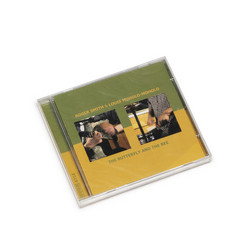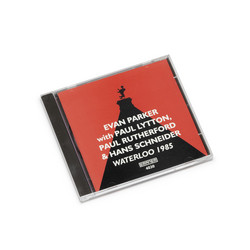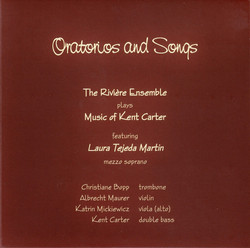The eight-five minutes of totally improvised music produced at the 1974 ICA concert are so cohesive that it sounds as if this quintet had worked together for some considerable time. However, apart from a brief sound check earlier that day, this was the only occasion that these five musicians performed together.
Derek Bailey, Evan Parker, John Stevens and Trevor Watts had been part of the Spontaneous Music Ensemble for a few months in 1967 [heard on Withdrawal - Emanem 5040], which performed a transitional music that had departed from Free Jazz. What became the SME type of Free Improvisation arose later that year when the group had reduced to the duo of Stevens and Parker [Summer 1967 - Emanem 4005]. After a personnel change in 1968, Stevens and Watts became the nucleus of the SME until 1976. In the meantime, Bailey and Parker often performed together in various settings, and Bailey sat in with the SME from time to time.
Kent Carter, on the other hand, first visited Britain in mid-1973 as a member of a special Steve Lacy Quintet that also included Bailey, Stevens and Steve Potts [SAXOPHONE SPECIAL + - Emanem 4024]. He also played with Watts and Stevens in a very different, short-lived Free Jazz quartet led by Bobby Bradford [LOVE'S DREAM - Emanem 4096]. Although he came from a different background, Carter fitted in with the SME very well. Another indication of his breadth came later in 1974 when he recorded his first collection of solos and multi-tracks [BEAUVAIS CATHEDRAL - Emanem 4061].
For most of 1973, the duo SME performances of Stevens and Watts were very austere, concentrating on performances of the hyper-minimalist piece FLOWER. This piece was performed on October 11, and can be heard on FRAMEWORKS (Emanem 4134). The two duo pieces that preceded it that evening reveal other aspects of their repertoire.
CORSOP may well be a version of LACE, Stevens' piece inspired by Steve Lacy's sucking sounds. Note the section exploring the threshold of audibility - an area that became fashionable some two decades later. (Other musicians such as Paul Rutherford were also then exploring such quiet and tranquil areas.)
DAA-OOM, is a loose composition inspired by the music of both the central African pygmies and Albert Ayler. This was designed to be performed by a trio, as happened a few days later. Even decades later, the rawness of these pieces is still somewhat startling. When first issued, a famous musician described Stevens' vocal work as 'virtuosic', whereas an infamous writer called it 'ghastly'.
In the months prior to the quintet concert, there had been several trio performances at the Little Theatre Club. Bailey joined the Stevens/Watts duo there on at least four occasions [DYNAMICS OF THE IMPROMTU - Entropy 004]. There was a trio session with Parker (which does not seem to have survived on tape) following on from his participation in an Amalgam session, which was just about the first time that he had worked with Stevens for several years.
The results of an informal trio session on one of Carter’s visits to London are heard here. Three pieces were performed. The first, RAMBUNCTIOUS 1, is heard in its entirety - it is perhaps the closest thing to Jazz on these two CDs. The second, RAMBUNCTIOUS 2, was similar but less successful, so only the ending is included here. The third was based on Stevens' loose composition DAA-OOM, which takes its name from the bass part (missing in the earlier duo performance). The performance ran out of steam after about five minutes, so only the opening is heard. (When this session was first released, a reviewer wrote that this trio comprised Bailey, Carter & Stevens, and even went so far to compare it with that trio's later record!)
In the eighty-five minute ICA concert, all five musicians managed to both sound like themselves and sound like a group - a paradox that all good improvisers solve by listening to what the others are playing, and responding accordingly. This music is not an example of everyone going all out for themselves regardless of everyone else.
When John Stevens put this quintet together, he had envisioned that Derek Bailey would play acoustic guitar and Kent Carter cello. This instrumentation never happened in practice, since Bailey only used his unamplified '19-string (approx)' guitar during the second quarter of THIRTY-FIVE MINUTES whilst Carter was playing double bass, which he did for the first half of that piece. For the rest of the concert, Bailey used his 6-string guitar with two-pedal-controlled stereo amplification, and Carter played cello.
John Stevens' percussion kit comprised small cymbals and small drums with some bells and woodblocks. Both Evan Parker (heard on the left) and Trevor Watts (on the right) just(!) played soprano saxophones.
The first half of the concert consisted of one improvisation, FORTY MINUTES, which is included in full. The second half consisted of two improvisations, which are presented in the order performed. THIRTY-FIVE MINUTES has been edited very slightly in order to remove two brief moments of untogetherness - the total amount excised being less than one minute (the same as on prior releases). TEN MINUTES is complete as performed.
Even after listening to this music many times, it is still full of many surprises - very pleasant surprises, that is. However, the unexpected is what one expects when one puts five seasoned and original improvisers together. Certainly, anyone who likes all music to be completely predictable will get very little satisfaction here.
A few weeks after this concert, there was an unrecorded quartet session - Carter having by then returned to France. (There was also a trio performance by Bailey, Carter and Stevens at the Unity Theatre sometime that year, but it seems to have been forgotten since it was both untogether and unrecorded.) Some two years later, the SME underwent a drastic change in personnel, so that none of the musicians heard here were group members any more, apart from John Stevens.
MARTIN DAVIDSON (1986, 1996, 2006)
